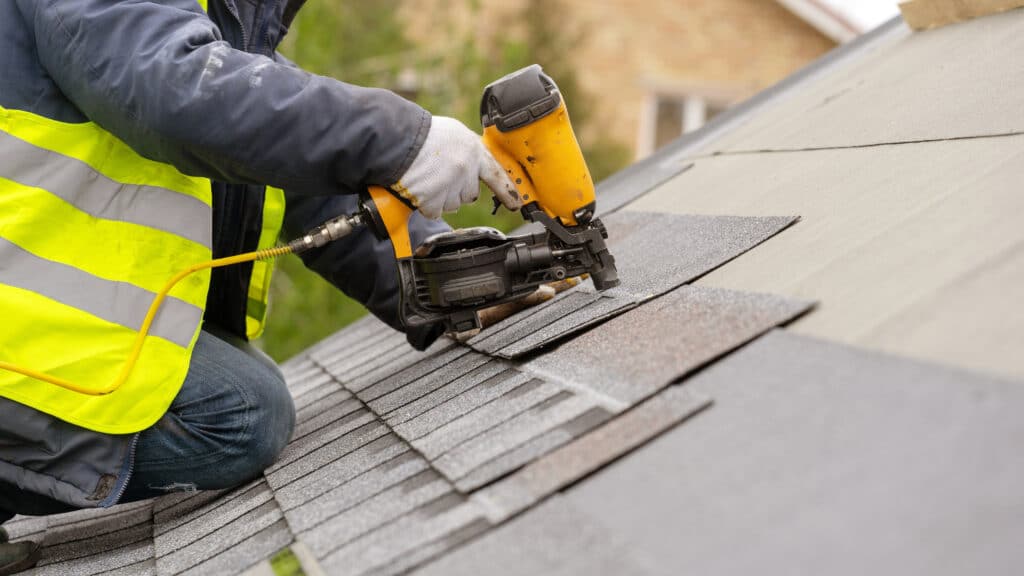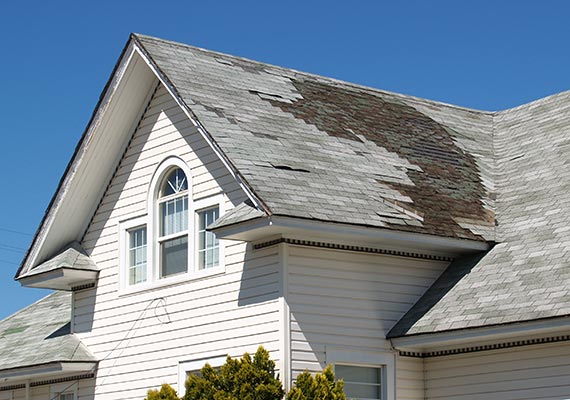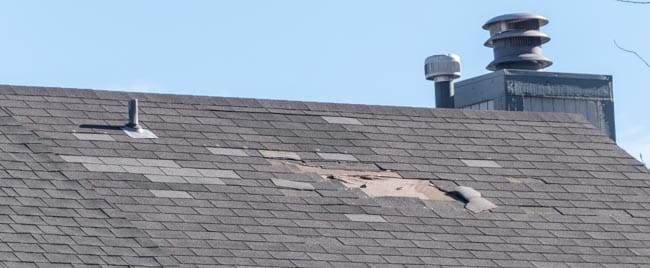
Roof Repairs
Even if damage isn’t immediately visible, addressing issues promptly is crucial. Repairing your roof will:
- Restore Integrity and Lifespan: Quick repairs help sustain the structural integrity of your roof, extending the lifespan and guaranteeing long-term protection for your home.
- Prevent Costly Interior Damage: Addressing roof damage promptly can prevent water infiltration and potential interior damage, saving you from expensive repairs down the line.


Here’s how we suggest a breakdown of roof repair work and what you should consider
Signs that repairs are needed:
- Leaks: Water stains on ceilings or walls, dripping water, or dampness in the attic are indicators of roof leaks.
- Missing or damaged shingles: Shingles that are cracked, curled, or missing can compromise the roof’s ability to shed water effectively.
- Sagging or drooping areas: This could be a sign of structural damage or rotting decking underneath the roof.
- Granules in gutters: Excessive granule loss from asphalt shingles may indicate aging or weathering, requiring repair or replacement.
- Damaged flashing: Loose or damaged flashing around chimneys, vents, or skylights can lead to leaks.
Inspection and assessment:
- Hire a professional roofer to inspect the roof thoroughly. They will assess the extent of damage and provide recommendations for repairs.
- Consider factors such as the age of the roof, the severity of damage, and the overall condition to determine if repairs are feasible.
7. Insurance considerations:
- Check if the repairs are covered by your homeowner’s insurance policy. Document the damage and keep records of repair expenses for insurance claims.
8. Environmental factors:
- Consider environmental factors such as climate, weather patterns, and local building codes when planning repairs or replacement.
Age of roof:
- Do you know when your current roof was installed? Depending on the type of roofing material used, its age may be a good indication of when to replace a roof.
Types of repairs:
- Replacing damaged or missing shingles.
- Repairing leaks by sealing or patching damaged areas.
- Fixing damaged flashing around chimneys, vents, or skylights.
- Reinforcing or replacing deteriorated decking.
- Addressing structural issues such as sagging or drooping sections.
Repair vs. Replacement:
- Minor damage such as a few missing shingles or small leaks can often be repaired without needing to replace the entire roof.
- If the damage is extensive, or if the roof is nearing the end of its lifespan, replacement may be a more cost-effective and long-term solution.
Hiring a professional:
- It’s crucial to hire a reputable and experienced roofing contractor for repairs. Look for licensing, insurance, and good reviews.
- Obtain multiple quotes and compare the scope of work, materials used, and warranties offered.
Maintenance after repairs:
- Regular maintenance, such as cleaning gutters, removing debris, and trimming overhanging branches, can help prevent future damage and prolong the life of your roof.
